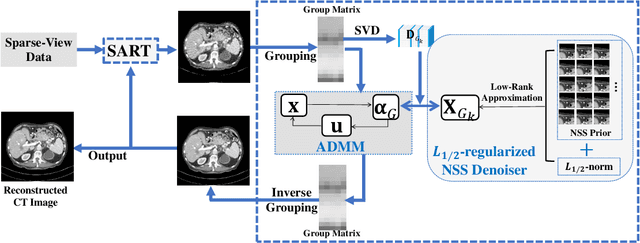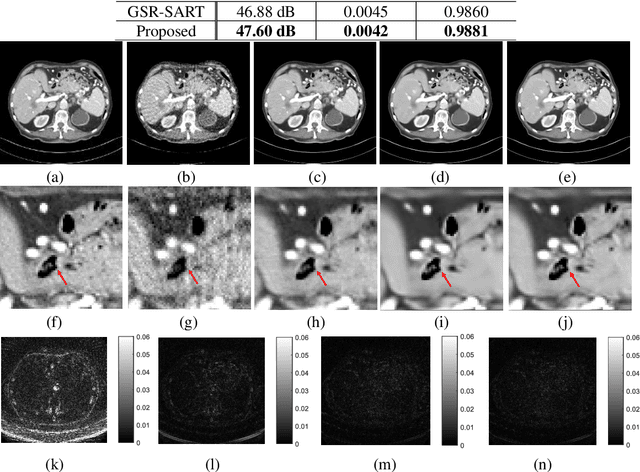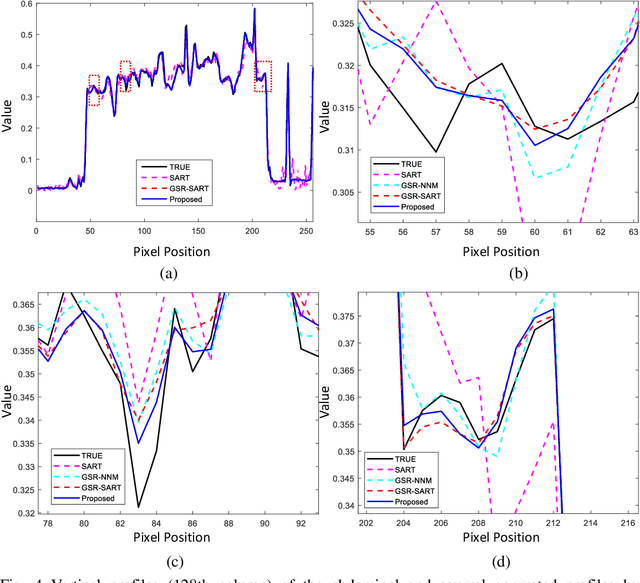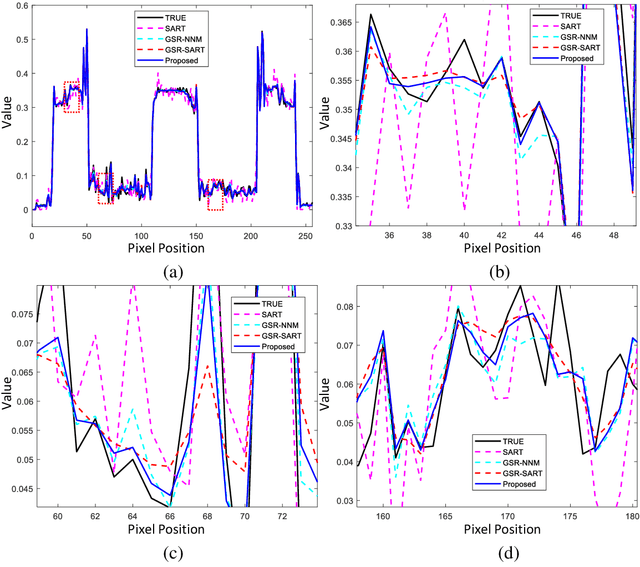Hengmin Zhang
Department of Computer and Information Science, University of Macau
Nonconvex ${L_ {1/2}} $-Regularized Nonlocal Self-similarity Denoiser for Compressive Sensing based CT Reconstruction
May 15, 2022



Abstract:Compressive sensing (CS) based computed tomography (CT) image reconstruction aims at reducing the radiation risk through sparse-view projection data. It is usually challenging to achieve satisfying image quality from incomplete projections. Recently, the nonconvex ${{L_ {{1/2}}}} $-norm has achieved promising performance in sparse recovery, while the applications on imaging are unsatisfactory due to its nonconvexity. In this paper, we develop a ${{L_ {{1/2}}}} $-regularized nonlocal self-similarity (NSS) denoiser for CT reconstruction problem, which integrates low-rank approximation with group sparse coding (GSC) framework. Concretely, we first split the CT reconstruction problem into two subproblems, and then improve the CT image quality furtherly using our ${{L_ {{1/2}}}} $-regularized NSS denoiser. Instead of optimizing the nonconvex problem under the perspective of GSC, we particularly reconstruct CT image via low-rank minimization based on two simple yet essential schemes, which build the equivalent relationship between GSC based denoiser and low-rank minimization. Furtherly, the weighted singular value thresholding (WSVT) operator is utilized to optimize the resulting nonconvex ${{L_ {{1/2}}}} $ minimization problem. Following this, our proposed denoiser is integrated with the CT reconstruction problem by alternating direction method of multipliers (ADMM) framework. Extensive experimental results on typical clinical CT images have demonstrated that our approach can further achieve better performance than popular approaches.
Learning Semantically Enhanced Feature for Fine-Grained Image Classification
Jul 05, 2020



Abstract:We aim to provide a computationally cheap yet effective approach for fine-grained image classification (FGIC) in this letter. Unlike previous methods that rely on complex part localization modules, our approach learns fine-grained features by improving the semantics of sub-features of a global feature. Specifically, we first achieve the sub-feature semantic by arranging feature channels of a CNN into different groups through channel permutation. Meanwhile, to enhance the discriminability of sub-features, the groups are guided to be activated on object parts with strong discriminability by a weighted combination regularization. This process brings only 1.7% additional parameters to its ResNet-50 backbone. Moreover, our approach can be easily integrated into the backbone model as a plug-and-play module for end-to-end training with only image-level supervision. Experiments verified the effectiveness of our approach and validated its comparable performance to the state-of-the-art methods. Code is available at https://github.com/cswluo/SEF
Learning with Inadequate and Incorrect Supervision
Feb 20, 2019



Abstract:Practically, we are often in the dilemma that the labeled data at hand are inadequate to train a reliable classifier, and more seriously, some of these labeled data may be mistakenly labeled due to the various human factors. Therefore, this paper proposes a novel semi-supervised learning paradigm that can handle both label insufficiency and label inaccuracy. To address label insufficiency, we use a graph to bridge the data points so that the label information can be propagated from the scarce labeled examples to unlabeled examples along the graph edges. To address label inaccuracy, Graph Trend Filtering (GTF) and Smooth Eigenbase Pursuit (SEP) are adopted to filter out the initial noisy labels. GTF penalizes the l_0 norm of label difference between connected examples in the graph and exhibits better local adaptivity than the traditional l_2 norm-based Laplacian smoother. SEP reconstructs the correct labels by emphasizing the leading eigenvectors of Laplacian matrix associated with small eigenvalues, as these eigenvectors reflect real label smoothness and carry rich class separation cues. We term our algorithm as `Semi-supervised learning under Inadequate and Incorrect Supervision' (SIIS). Thorough experimental results on image classification, text categorization, and speech recognition demonstrate that our SIIS is effective in label error correction, leading to superior performance to the state-of-the-art methods in the presence of label noise and label scarcity.
 Add to Chrome
Add to Chrome Add to Firefox
Add to Firefox Add to Edge
Add to Edge